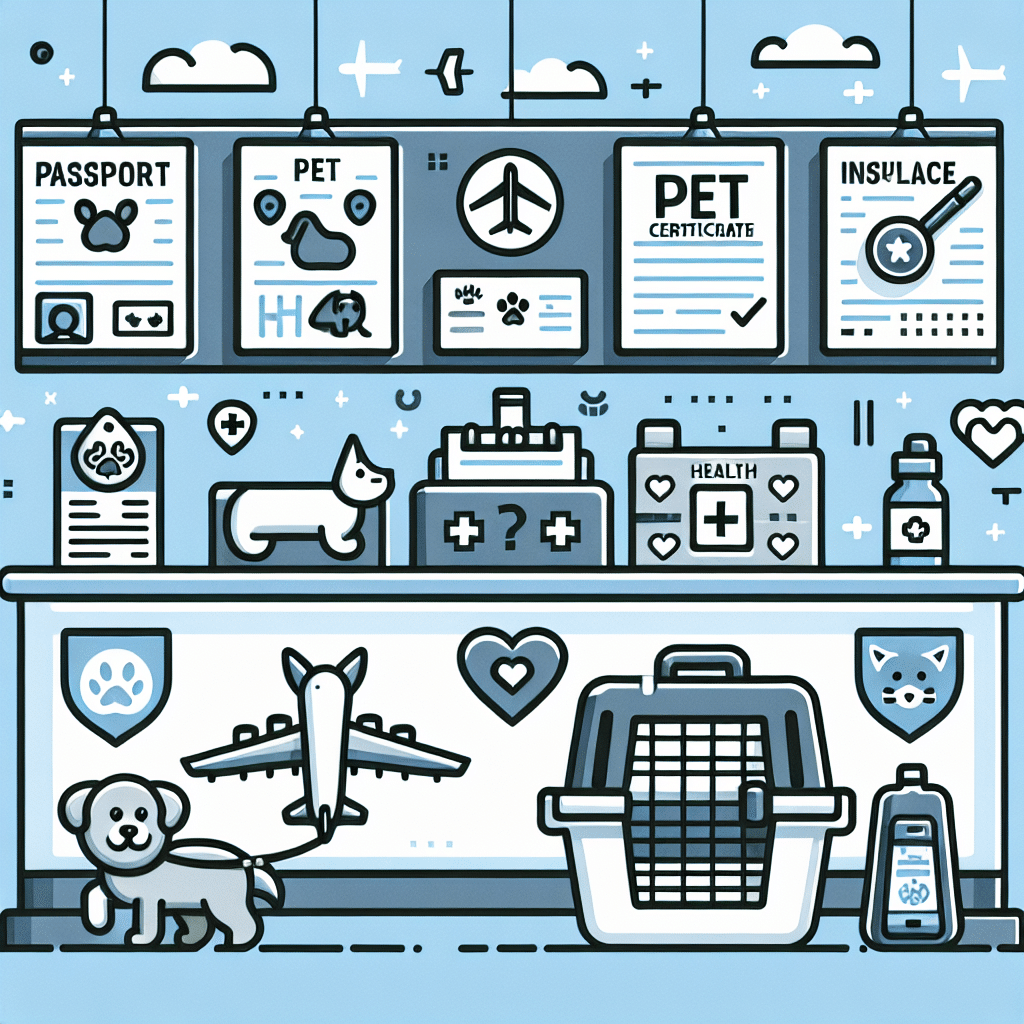Documents Required for Hassle-Free Pet Air Travel
Traveling with pets can be exciting, but it also comes with its own set of challenges, particularly when it involves air travel. To ensure a smooth journey for you and your furry companions, understanding the essential documents required for pet air travel is crucial. Here is a detailed guide to help pet owners navigate the paperwork necessary for flying with pets.
1. Health Certificate
A health certificate is one of the most critical documents required when traveling with pets. This certificate, often required by airlines and various countries, verifies that your pet is in good health and has been examined by a licensed veterinarian. The certificate should include:
- Veterinarian’s Details: Name, address, and contact information of the attending veterinarian.
- Pet Information: Your pet’s name, breed, age, and identifying characteristics.
- Health Status: A statement confirming that your pet is free from contagious diseases.
- Vaccination Records: Details about essential vaccinations, particularly rabies, which are usually mandated for international travel.
It’s important to note that most airlines require the health certificate to be issued within a specific timeframe before travel, generally within 10 days, so plan your vet visit accordingly.
2. Vaccination Records
Apart from the health certificate, providing up-to-date vaccination records can facilitate the travel process. The records should include:
- Vaccination Dates: Clear documentation of when each vaccination was administered.
- Types of Vaccinations: Include rabies, distemper, parvovirus, Bordetella, and any other relevant vaccines based on your pet’s health risk.
- Veterinary Signature: The records should be signed by a recognized veterinarian, attesting to the validity of the information.
When traveling internationally, check the destination’s specific vaccination requirements, as some countries may require additional shots or treatments.
3. Microchip Information
Having your pet microchipped is highly recommended, particularly for air travel. While not always required, it serves as a permanent form of identification. Ensure the following is documented:
- Microchip Number: The unique identification number assigned to your pet.
- Registration Details: Confirmation that the microchip is registered with your contact information. This can aid you in locating your pet should they become lost during travel.
Always verify that the microchip is functioning correctly and that the information on the registration is up-to-date.
4. Airline-Specific Documentation
Different airlines have unique pet travel policies, so it’s important to check their requirements well in advance. Common documentation that airlines may require includes:
- Booking Confirmation: Proof of your itinerary that confirms your pet’s place reserved on the flight (if applicable).
- Pet Carrier Specifications: Ensure you have documents confirming that your carrier meets the airline’s specifications, such as size and ventilation requirements.
Consult the airline’s pet travel policy section on their website, as this will provide specific guidelines.
5. Pet Passport
For international travel, a pet passport can streamline the process. This can include:
- Health Certificate: It can function as an official health certificate recognized by other countries.
- Vaccination Records: Documentation of all required vaccinations.
- Identification Information: Microchip number and implant date.
Pet passports are mainly issued by some countries and are essential for ensuring pets can cross borders without complications.
6. Import Permit
If you are traveling to a country that controls the importation of animals, you may require an import permit. This document serves as an official authorization from that country’s government for your pet to enter. It typically includes:
- Owner Information: The name and contact details of the pet owner.
- Pet Details: Description of your pet, including breed, age, and microchip number.
- Vaccination Proof: Documentation illustrating that all required vaccinations are current.
Check with your destination country’s agricultural or wildlife department for specific details regarding obtaining an import permit.
7. Letter of Pet Travel Authority
Certain countries or airlines may require a letter of authority stating that you are permitted to travel with your pet. This letter can include:
- Your Details: Full name and contact information of the pet owner.
- Pet Information: Details about your pet, including microchip and vaccination status.
- Travel Intent: A declaration that you will ensure your pet’s safety and compliance with travel regulations.
While not universal, having such a letter can be beneficial for seamless travel.
8. Travel Insurance
While technically not a document required for travel, having travel insurance that includes pet coverage can be essential for any unforeseen events. This can include:
- Coverage for Cancellation: Protection against expenses incurred if you need to cancel your trip.
- Emergency Vet Visits: Coverage for medical emergencies during travel.
- Lost Pet Assistance: Financial cover for searching for lost pets.
Ensure to check the terms and conditions of the policy to find what is covered specifically for pets.
9. Leash and Muzzle Policy
While not formal documents, ensuring you have a proper leash and muzzle (if required by the airline) on hand can assist in meeting airline policies. This often includes:
- Harness and Leash: A sturdy harness and a non-retractable leash for security during transport.
- Muzzle: Necessary for certain breeds or airline requirements, particularly for snub-nosed dogs during air travel.
Consult your airline’s policies to ensure compliance with their rules regarding pet containment.
10. Rabies Titer Test
For international travel to specific locations, a rabies titer test may be vital. This test confirms the effectiveness of the rabies vaccination and may be mandated by destination countries. Documentation should include:
- Date of Test: When the rabies titer test was conducted.
- Results: Confirmation that the rabies levels meet the required threshold.
- Veterinary Certification: A veterinarian’s endorsement of the test results.
Ensure that you begin this process well in advance, as it can take time to complete.
By preparing these documents ahead of time, you can minimize potential hassles and ensure a more enjoyable air travel experience for both you and your pets. Always double-check the requirements with your airline and destination country for any additional prerequisites, making your journey as smooth as possible.
